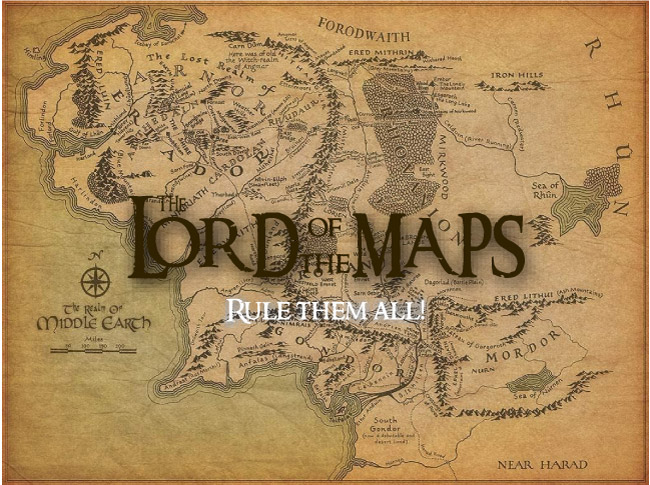
Search
Second Hunnic War

The Second Hunnic War commenced with Mihirakula's ascension to power in West Punjab around 515 AD, succeeding his father, Toramana. Initially, Mihirakula's authority seemed lesser compared to his father's, as indicated by numismatic evidence. In 520, Song Yun encountered the "King of the Huns" along the Jhelum River, where the Northern Wei envoy depicted him as having a violent demeanor and being responsible for massacres, resulting in an unpleasant meeting.
Mihirakula consolidated his control in India by emulating his father's initial campaign, as implied by an inscription found in a temple of the Sun at Gwalior, between the Chambal and Betwa rivers. The inscription suggests that the Sun Temple at Surāj Kund might have been a Hun temple, possibly housing a garrison. Mātrceta, rumored to be associated with King Mihirakula, could have been a beneficiary of the foundation's success, indicating ties between the Hunnic and Iranian cultures.
It is proposed that the garrison might have included individuals of Iranian descent, with a temple catering to their religious needs by combining Indian and Iranian sun gods, Surya (Bhanu) and Mithra, respectively. This religious syncretism is reminiscent of Roman legionary stations, which often contained Mithraea.
Mihirakula's domain extended from Gwalior Hill in eastern Malwa to Sialkot in northern Punjab, forming a corridor bordered by the Aulikara kingdom of Yashodharman to the southwest and the territory of the Maukharis to the northeast, who had previously seized parts of the Ganga-Yamuna Plain. This territorial expanse facilitated Mihirakula's strategic position in the region.
The Second Hunnic War
Mihirkula the Huna
The Second Hunnic War began when Mihirakula, the son of Toramana, established his position in West Punjab shortly after taking over as leader of his father shortly after 515. Based on numismatic evidence, it appears that Mihirakula led a group of Alkhan chiefs and was not as powerful as his father. Song Yun met the "King of the Huns" in 520, as we have seen above, on the banks of the Jhelum River. The Northern Wei envoy depicted the king (chiqin) as having a violent and harsh disposition and having perpetrated massacres. The meeting was unpleasant.
Mihirakula tightened his hold in India by going the same path his father had taken during the latter's initial campaign. This is inferred from the one known inscription of Mihirakula, which was discovered "built into the wall in the porch of a temple of the Sun in the fortress of Gwalior," between the Chambal and Betwa rivers. The Sun Temple at Surāj Kund, where the inscription was discovered, is no longer standing; it might have been the heir to the first Sun (Surya) temple established by Mātrceta.
One of the people who was rumoured to live there because of King Mihirakula (prasadena) was Mātrceta. These individuals are identified as the heirs who will benefit from the foundation's success. Consequently, the recently established Sun Temple might have served as a Hun temple, with a garrison inside the fort. A monarch named Mihirakula, which means "Family of Mihira" and is of Mitra, is a direct example of the Alkhan's Iranian ties.
According to Hans T. Bakker It's possible that some of the garrison's members were of Iranian descent, and a temple that combined the sun gods of India's Surya (Bhanu) and Iran's Mithra catered to their religious needs.The Roman legionary stations contain Mithraea.
It is clear that Mihirakula ruled over a wide swath of territory that connected his stronghold of Gwalior Hill in eastern Malwa to his home base of Sialkot in northern Punjab. This corridor shared borders with the Aulikara kingdom of Yashodharman to the southwest and the Maukharis' territory to the northeast, where they had previously taken over portions of the Ganga-Yamuna Plain.
Hunnic reverses
The Second Hunnic War started in 520, when the Alchon king Mihirakula, son of Toramana, is recorded in his military encampment on the borders of the Jhelum by Chinese monk Song Yun. At the head of the Alchon, Mihirakula is then recorded in Gwalior, Central India as "Lord of the Earth" in the Gwalior inscription of Mihirakula. According to some accounts, Mihirakula invaded India as far as the Gupta capital Pataliputra, which was sacked and left in ruins.: 64
There was a king called Mo-hi-lo-kiu-lo (Mihirakula), who established his authority in this town (Sagala) and ruled over India. He was of quick talent, and naturally brave. He subdued all the neighbouring provinces without exception.
The destructions of Mihirakula are also recorded in the Rajatarangini:
Mihirakula, a man of violent acts and resembling Kāla (Death) ruled in the land which was overrun by hordes of Mlecchas... the people knew his approach by noticing the vultures, crows, and other [birds], which were flying ahead to feed on those who were being slain within his army's [reach]
Finally however, Mihirakula was defeated in 528 by an alliance of Indian principalities led by Yasodharman, the Aulikara king of Malwa, in the Battle of Sondani in Central India, which resulted in the loss of Alchon possessions in the Punjab and north India by 542. The Sondani inscription in Sondani, near Mandsaur, records the submission by force of the Hunas, and claims that Yasodharman had rescued the earth from rude and cruel kings, and that he "had bent the head of Mihirakula". In a part of the Sondani inscription Yasodharman thus praises himself for having defeated king Mihirakula:
He (Yasodharman) to whose two feet respect was paid, with complimentary presents of the flowers from the lock of hair on the top of (his) head, by even that (famous) king Mihirakula, whose forehead was pained through being bent low down by the strength of (his) arm in (the act of compelling) obeisance
The Gupta Empire emperor Narasimhagupta is also credited in helping repulse Mihirakula, after the latter had conquered most of India, according to the reports of Chinese monk Xuanzang. In a fanciful account, Xuanzang, who wrote a century later in 630 CE, reported that Mihirakula had conquered all India except for an island where the king of Magadha named Baladitya (who could be Gupta ruler Narasimhagupta Baladitya) took refuge, but that was finally captured by the Indian king. He later spared Mihirakula's life on the intercession of his mother, as she perceived the Hun ruler "as a man of remarkable beauty and vast wisdom". Mihirakula is then said to have returned to Kashmir to retake the throne.: 168 This ended the Second Hunnic War in c. 534, after an occupation which lasted nearly 15 years.
Victories of the Maukharis
According to the Aphsad inscription of Ādityasena, the Maukharis also fought against the Hunas in the areas of the Gangetic Doab and Magadha. The Aphsad inscription of Ādityasena mentions the military successes of kings of the Later Gupta dynasty against the Maukharis, and explains that the Maukharis were past victors of the Hunas:
"The son of that king (Kumaragupta) was the illustrious Dâmôdaragupta, by whom (his) enemies were slain, just like the demons by (the god) Dâmôdara. Breaking up the proudly stepping array of mighty elephants, belonging to the Maukhari, which had thrown aloft in battle the troops of the Hûnas (in order to trample them to death), he became unconscious (and expired in the fight)."
The Maukharis led by their king Ishanavarman, rather than any of the Guptas, were therefore pivotal in repelling the Hunas.
Battle of Sondani
This resulted in the loss of Alchon possessions in the Punjab and north India by 542. The Sondani inscription in Sondani, near Mandsaur, records the submission by the Hunas, and claims that Yasodharman had rescued the earth from rude and cruel kings, and that he "had bent the head of Mihirakula". In a part of the Sondani inscription Yasodharman thus praises himself for having defeated king Mihirakula:
He (Yasodharman) to whose two feet respect was paid, with complimentary presents of the flowers from the lock of hair on the top of (his) head, by even that (famous) king Mihirakula, whose forehead was pained through being bent low down by the strength of (his) arm in (the act of compelling) obeisance
The Gupta Empire emperor Narasimhagupta is also credited in helping repulse Mihirakula, after the latter had conquered most of India, according to the reports of Chinese monk Xuanzang.
In a fanciful account, Xuanzang, who wrote a century later in 630 CE, reported that Mihirakula had conquered all India except for an island where the king of Magadha named Baladitya (who could be Gupta ruler Narasimhagupta Baladitya) took refuge, but that was finally captured by the Indian king. He later spared Mihirakula's life on the intercession of his mother, as she perceived the Hun ruler "as a man of remarkable beauty and vast wisdom". Mihirakula is then said to have returned to Kashmir to retake the throne.: 168
Moreover, according to some scholars' suggestions, a confederacy of Yashodharman and Narasimhagupta Baladitya defeated and overthrew the Hunas in Malwa and eastern India.
Notes
List of conflicts
Aftermath
Collapse of Huna power
The Alchon huns, following their loss to Yaśodharman at Sondani, withdrew to the mountainous country, the fortified town of Sakala (Sialkot), the Himalayan foothills in northern Pakistan between the Jhelum river, Chenab river, and Ravi River, and the region from which Toramana had launched his conquests.
Rise of Shaivism
All of the royal families of these successor states including the Alchon Mihirakula had embraced Saivism, which had equally profound effects. Vaisnavism had been rendered obsolete by the fall of the Empire, particularly in its former lands. A theological innovation that specifically aided in this growth was Saivism's ability to provide access to both humdrum rewards and superformance power, in addition to this political component. This was accomplished by human agent lineages personifying god. This provided the Śaiva officials with a unique advantage over their Vaisnava counterparts. This is a unique factor, while Vaisnavism's diminished political standing following the collapse of the Gupta Empire. Saivism particularly gained traction in the regions of former Gupta territories. Although Vaisnavism flourished in the regions of Kashmir and Southern India.
Gupta-Aulikara War
Vajra, who succeeded Baladitya II, did not surpass his predecessor's accomplishments. Despite his construction of an additional monastery at Nalanda and his depiction as a devout Buddhist by Chinese sources, he proved incapable of resisting the formidable Yaśodharman of Malwa. However, the rapid expansion of Malava power was soon curtailed, likely through the influence of emerging feudatory royal houses rather than direct Gupta intervention.
Evidence from the Jaunpur, Uttar Pradesh stone inscription suggests that either Isvaravarman or his successor, presumably Isanavarman, successfully repelled a threat originating from 'the city of Dhar'. This conflict, occurring in the second quarter of the sixth century, likely corresponds to the invasion led by Yasodharman. The Maukhari kings played a significant role in opposing the Malava adventurer, receiving support from these feudatories.
Through alliances with such feudatories, Kumāragupta III, the son of Narasimhagupta II, and Vishnugupta Chandraditya, the son and successor of Kumāragupta III, were able to retain control of the imperial throne until the middle of the sixth century AD. These alliances were crucial for the Gupta dynasty's survival amidst political instability and external threats.
The Gupta Empire faced significant challenges during Yashodharman's conquests, as he expanded his victorious campaigns across North India. Despite initial successes, Yasodharman's ability to consolidate his conquests was limited, resulting in a short-lived reign reminiscent of a meteoric rise and fall. The circumstances surrounding his downfall remain unclear, but it is likely that the disintegration of the Gupta Empire, triggered by his victories, contributed to his demise.
The emergence of powers like the Maukharis and Later Guptas during this period suggests a shifting political landscape influenced by Yashodharman's actions. It is possible that the Gupta Emperor orchestrated Yashodharman's defeat by rallying these forces against him. Alternatively, Yashodharman may have succumbed to the chaos he instigated to dismantle the Gupta Empire.
Disintegration of the Gupta Empire
The Gupta Empire, a beacon of stability and prosperity in ancient India, faced a tumultuous period following the demise of Budhagupta, its illustrious ruler. This era was characterized by internal discord, exacerbated by external threats, which precipitated the empire's gradual decline. Succession disputes emerged as a primary catalyst for the empire's instability, leading to fragmentation and partition. The absence of a clear line of succession plunged the Gupta realm into uncertainty, opening the door to rival claimants vying for power.
Among these contenders were Narasimhagupta, Budhagupta's brother, and his successors. Narasimhagupta, known by the honorific title Baladitya, assumed the throne amidst a backdrop of political turmoil and uncertainty. However, his ascendancy was not without challenge, as other claimants, such as Vainyagupta and Bhanugupta, also sought to assert their authority. Vainyagupta's rule, centered in Bengal, and Bhanugupta's reign, commemorated in an inscription at Eran, added further complexity to the Gupta political landscape. The inscription detailing Bhanugupta's exploits suggests Gupta efforts to resist external threats, particularly the incursions of Huna chief Toramana.
Narasimhagupta's reign witnessed both triumph and tragedy. His notable victory over Huna chief Mihirakula demonstrated Gupta military prowess, yet internal discord continued to erode the empire's stability. As rival factions vied for supremacy, the Gupta Empire entered a period of decline marked by territorial loss and political fragmentation. These tumultuous events marked a pivotal chapter in Gupta history, signaling the empire's eventual demise and the end of an era of unparalleled prosperity and cultural flourishing in ancient India.
See also
- First Hunnic War
- Huna people
References
Text submitted to CC-BY-SA license. Source: Second Hunnic War by Wikipedia (Historical)
Owlapps.net - since 2012 - Les chouettes applications du hibou




